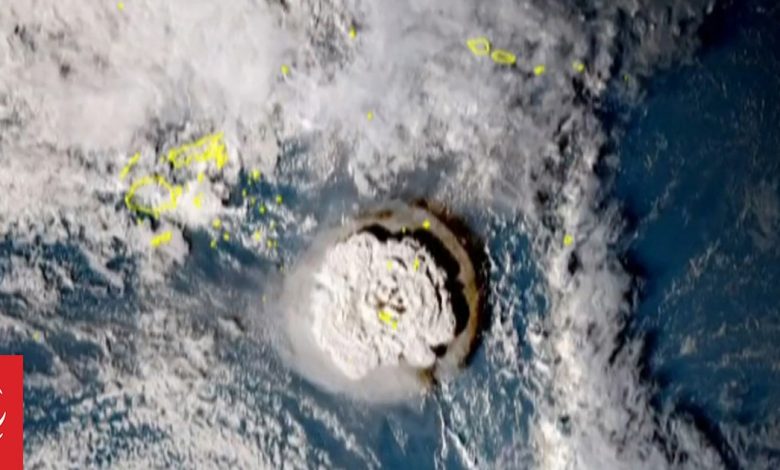Hunga-Tonga-Hunga-Ha’apai eruption ‘devastated’ sea life – study

The Hunga-Tonga-Hunga-Ha’apai eruption “devastated” nearby seafloor life, a new study shows.
An oceanographer from the University of Rhode Island in the US learned the local ocean floor was blanketed in ash a few months after the eruption, decimating the animal populations.
Roxanne Beinart led a research cruise in the southern Pacific in April 2022, to research underwater biology living around deep-sea hot springs in the region.
She found her site of study covered in ash from the volcano’s eruption, even 2.4 kilometres underwater.
She summarized her findings in a paper recently published in the science journal Nature Communications Earth and Environment.
“Having got to know this part of the world, the devastation was heartbreaking to witness, even if it was a natural event,” Beinart said.
“This huge, dense ecosystem was almost entirely gone. There was just complete devastation.”
The eruption of January 2022 devastated Tonga, and the island Kingdom is still recovering.
But it continues to generate research.
The study said although mass mortality of marine animals due to volcanic ash deposition has been seen before, in fossil form, it’s rarely been documented in real time.
“Using remotely-operated vehicle video footage and analysis of ash collected at the seafloor, we describe the devastating effect of the record-breaking 2022 Hunga submarine volcanic eruption on endangered and vulnerable snail and mussel species – that previously thrived at nearby deep-sea hydrothermal vents.
“In contrast to grazing, scavenging, filter-feeding, and predatory vent taxa, we observed mass mortality, likely due to smothering during burial by thick ash deposits, of the foundation species, which rely on symbiotic chemosynthetic bacteria for the bulk of their nutrition.”
Their dives ranged in distance from 83 to 222 km west of the Hunga caldera, the study said.
Beinart told the university she has no idea how the organisms there will fare when they return on their next expedition to the region.
At that time, she will be able to see how the ash has changed over time and what the recovery process looks like.
According to the news on Radio New Zealand




